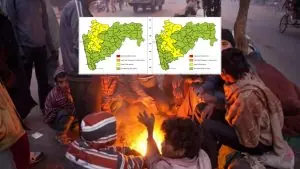Weather Experts Predict Harsh Winter Due to La Niña Taking Effect

After an erratic and sometimes unpredictable monsoon this year, get ready to face a colder-than-usual winter in 2025-26.
Top weather experts are warning that India should start preparing for a significantly colder season, all thanks to a climate phenomenon brewing in the Pacific Ocean called La Niña.
According to recent forecasts, there’s a high probability that La Niña conditions will develop by the end of the year. The US National Weather Service’s Climate Prediction Center has placed a “La Niña Watch” in effect, citing a 71% chance of it forming between October and December 2025.
But what does an event in the Pacific Ocean have to do with how cold your winter in India will be? Quite a lot, as it turns out. La Niña is the cooler counterpart to El Niño. It involves a large-scale cooling of sea surface temperatures in the central and eastern equatorial Pacific, which sends ripples through the global atmosphere, altering weather patterns worldwide.
For India, the link is often very direct: La Niña is historically associated with colder-than-normal winters. The India Meteorological Department (IMD) confirms this, with their models showing a over 50% likelihood of La Niña emerging in the post-monsoon months.
An IMD official explained that while the overarching effect of climate change provides a warming influence, “winters during La Niña years tend to be colder compared to years without it.” This year has an added factor; a good monsoon season has already helped keep overall temperatures in check, setting the stage for a cooler transition into winter.
Private weather forecaster Skymet Weather’s president, G.P. Sharma, notes that the Pacific is already cooler than average. He suggests that even if the event is short-lived, its effects could be felt. “For India, cooler Pacific waters generally translate to harsher winters and a higher chance of snowfall, especially in the northern and Himalayan regions,” he said.
This warning is backed by science. A 2024 study found that La Niña plays a crucial role in triggering intense cold waves over north India. The phenomenon helps funnel cold air from higher latitudes into the country, leading to more frequent and longer-lasting cold wave events.
So, while it’s still a few months away, the message is clear: it might be time to dig out those extra blankets. India appears to be on track for a harsh winter due to La Niña.







